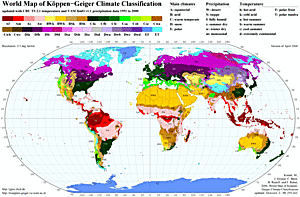
|
Material Noteswritten by Rene K. Mueller, Copyright (c) 2005, last updated Sat, March 15, 2008
Climate
This is why the traditional felt for the yurt, as example, isn't suitable anymore for the outer layer. I have been searching for alternatives. So, several layers are considered.
RaincoverThe outer layer as I call it must be waterproof, the main function to insulate against rain. Synthetic
Polyethylen (PE) is one of the options, the blankets are available also up to 30m, at a reasonable price. PE yet isn't fully UV resistant, and may last only 1-2 years at full exposure all year, with colored surface, such as green or blue, the UV resistance is extended to 2-4 years, but much more seems not possible. Aprx. CHF 2-10/m
PVC is another option, used for trucks, or quality tents, quite heavy material (600g/m2).
Polyester and Cotton mixture (e.g. 50/50) is quite heavy 300-400g/m2, and suitable for a raincover, but it may require an additional cover to extend its lifetime, e.g. another light cotton layer as in case of a yurt.
The options I have been researching, in regards of suitability and pricing. Additionally material insulation can be measured, thermal conductivity λ, the amount of Watts per Meter per Kelvin, the smaller the value the better the insulation. The k-Value is the actual insulation value for a given thickness of the material:
For the interior solely aesthetic considerations are important. Cotton or cotton synthetic mixtures are suitable. I personally prefer bright colors, white and bright beige to capture and reflect as much light (e.g. from the roof opening of the yurt). 1.5-1.6m wide lanes.
The floor is required if you build a temporary building in a climate zone which doesn't provide stable and dry ground. E.g. in Monogolia rather dry climate applies to native yurts, and carpets are layed direct unto the grass and ground.
In Europe, where more moist and wet climate is another approach is required. First be aware to find a good location, preferable on top of a slight slope (or even tiny hill) so the (rain) water runs away from you; by no means ever build a temporary building in a land dent, there all water collects.
A wooden floor above gravel is a simple way to get a good floor, but not yet winter suitable.
Prepare the ground first:
The floor, often multi-layered:
Avoid to use cement for temporary buildings, remain "temporary" even you plan to have it a couple of years.
| ||||||||||||||||||||||||||||||||||||||||||||||||||||||||||||||||||||
| Home | · | About | · |  Tipi | · |  Yurt | · |  Dome | · | Features | · | Gallery |

Creative Commons (CC) BY-SA-NC 2005-2017, developed, designed and written by René K. Müller
Graphics & illustrations made with Inkscape, Tgif, Gimp, PovRay, GD.pm
Web-Site powered by FreeBSD & Debian/Linux - 100% Open Source



